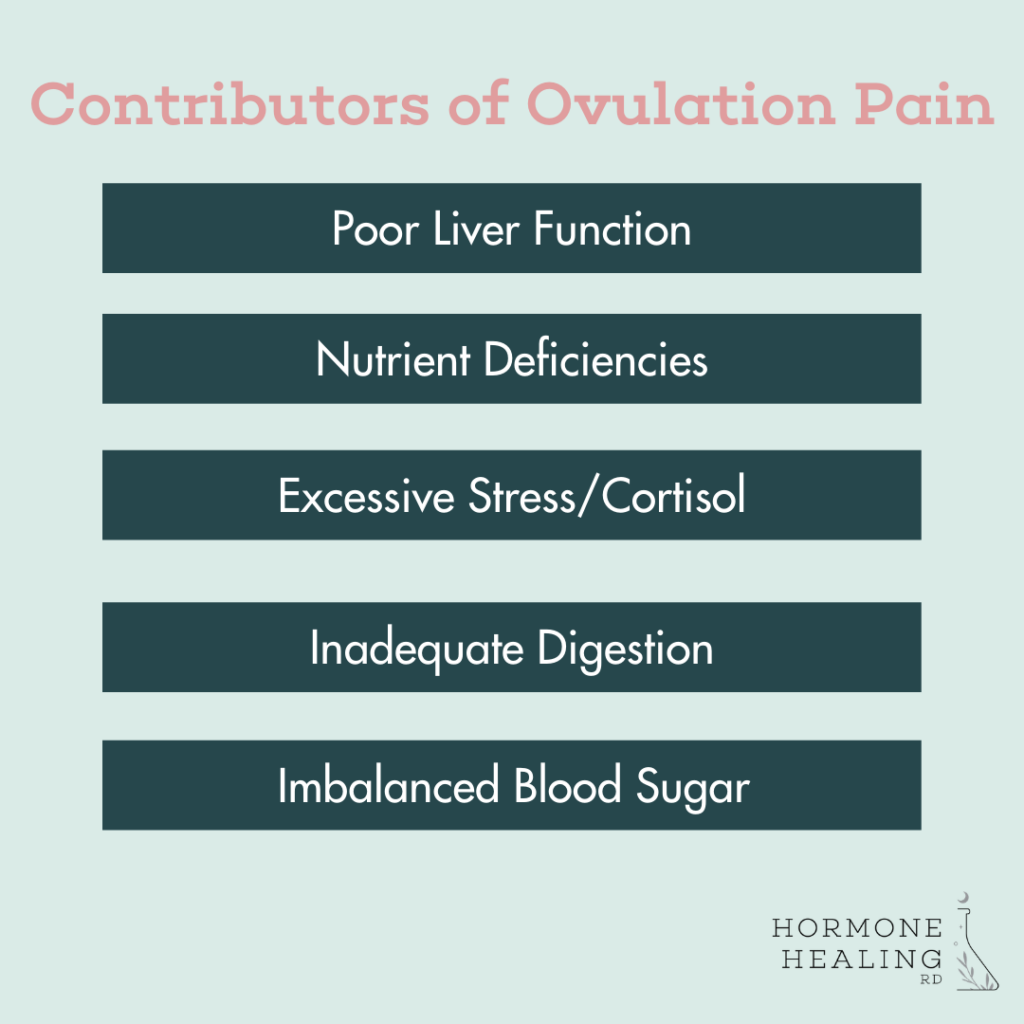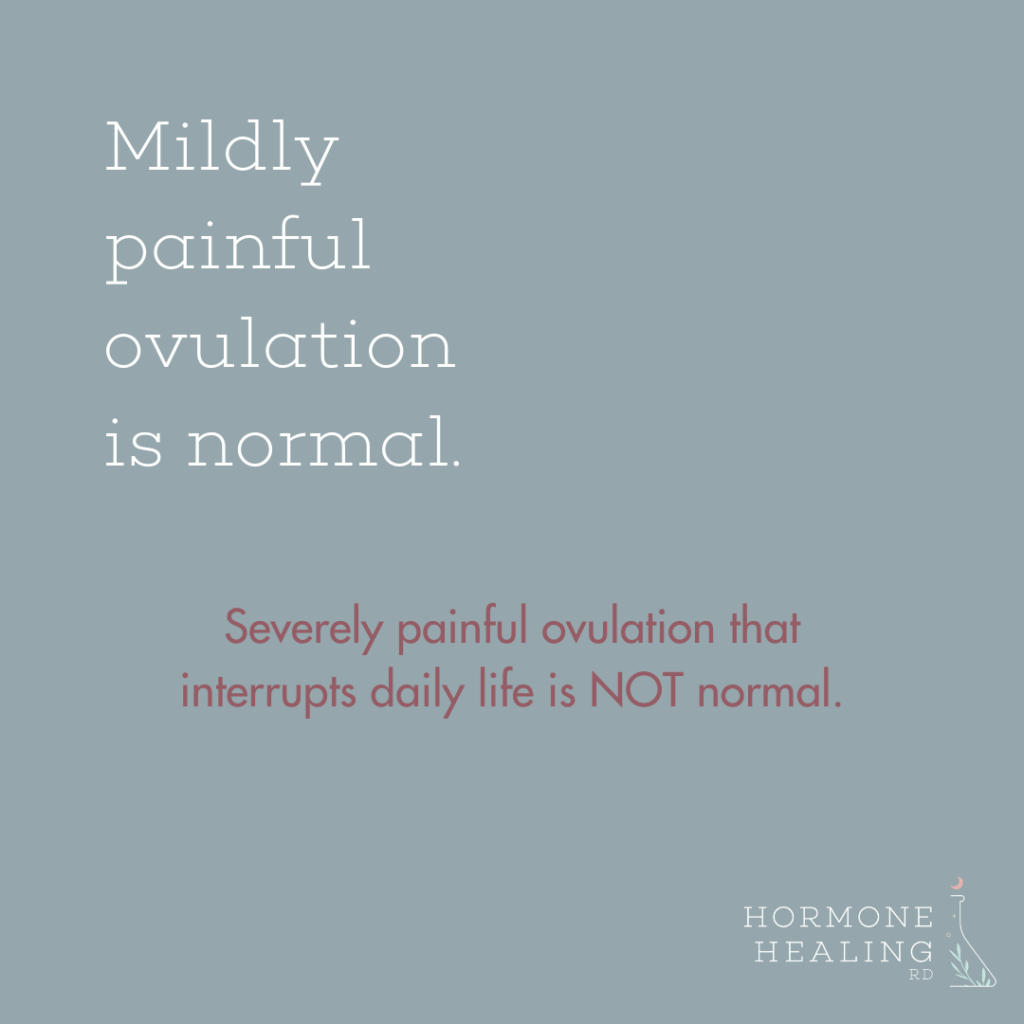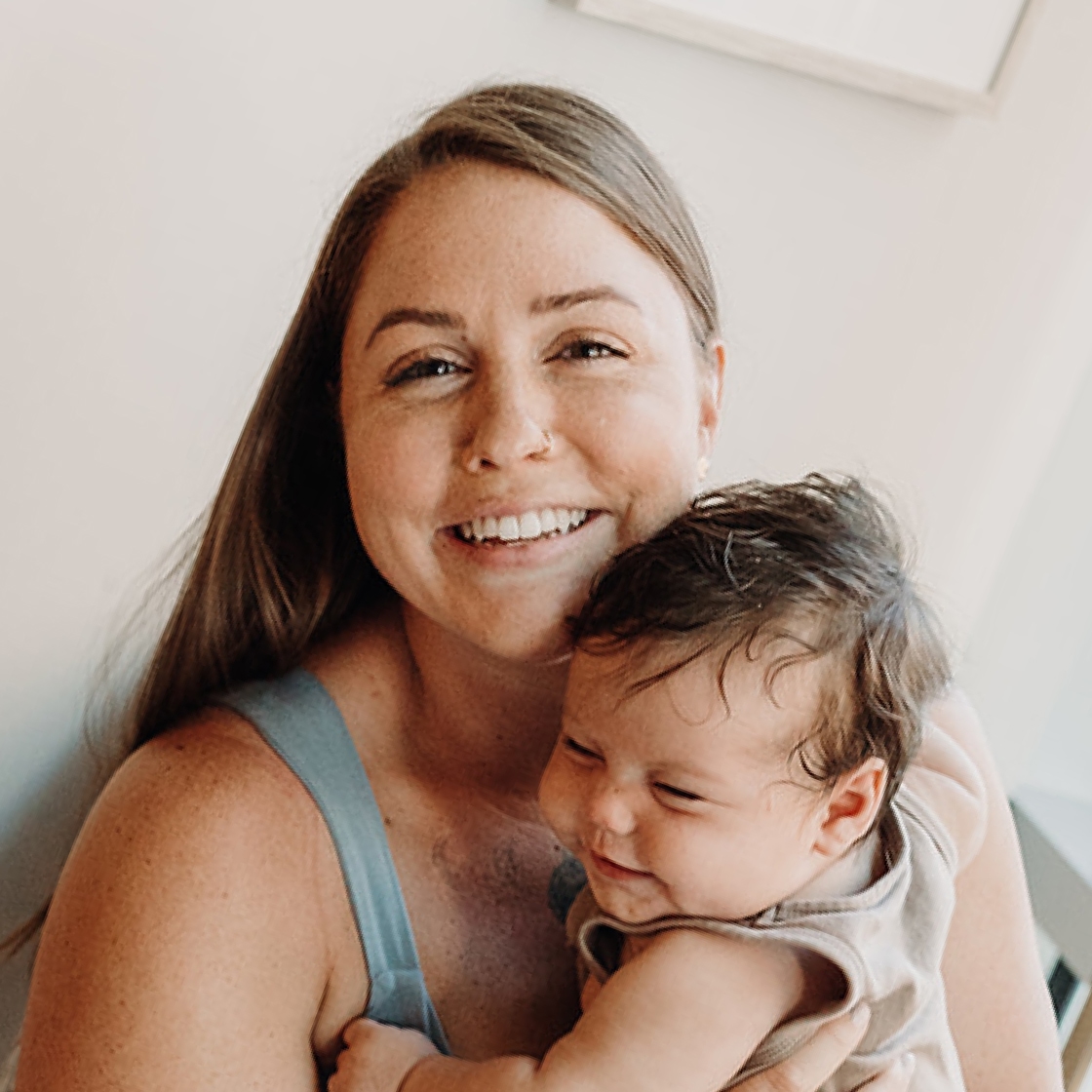Do you have heating pads and pain pills on standby for period and ovulation pain? If so, rest assured that you are not alone. An overwhelming number of women suffer from painful ovulation. Pain during ovulation is normal; however, there are a few layers to what can contribute to painful ovulation as usual. Let’s start by defining ovulation:
Ovulation occurs about midway through our menstrual cycle, in between periods. It is the process of releasing an egg from one of the ovaries. Ovulation is the highlight of our cycle since it’s how we make progesterone. Without ovulation, progesterone can’t balance out the estrogen. Here’s what it looks like during our menstrual cycle–after menstruation, our follicle is built up and getting ready to release an egg. Estrogen is increasing during this time and then peaks–this peak stimulates the release of luteinizing hormone or LH, which tells our ovary to release an egg. Some women get pain in one of their ovaries when it occurs–it shows up as pain on one side of their lower abdomen. This is also known as “Mittelschmerz.”
This is the most common type of ovulation pain discussed, but I also consider symptoms like migraines, headaches, low back pain, muscle aches, etc., to count as pain around ovulation. I also count these toward period pains during that time. What do all these types of pain have in common? They are all driven by estrogen. Why does estrogen cause pain? Estrogen increases inflammation, which leads to more prostaglandins and more pain. Estrogen also increases vascular spasms in our muscles, leading to cramping during ovulation or right before our period.
Estrogen is supposed to be increasing leading up to ovulation–it’s how we ovulate, and we need enough, but when we have too much, it can lead to inflammation and pain.

What Contributes to Excess Estrogen?
I’ve talked about estrogen A LOT and have many blogs and posts on this, but let’s do a quick breakdown of areas that can lead to estrogen imbalances and issues like ovulation pain (whether it be muscle or migraine/headache).

Is Any Amount of Pain Normal During Ovulation?
It is normal to have some mild cramping during ovulation. This is common after getting off of hormonal birth control as well as after you’ve had children or if you’re recovering a regular cycle after having PCOS. If you have some mild cramping that is tolerable and just tells you you’re ovulating, that’s not a concern. If you’re in extreme pain and it’s impacting your life, that IS a concern. After the pill, postpartum, and after recovering your cycle with PCOS, the pain should reduce within three cycles. If this does not happen, talk with your doctor or healthcare practitioner about the next best steps.

I Also Struggle with Anxiety & Mood Changes Around Ovulation–Is That Normal?
Along with the pain that can come from excess estrogen, mood changes and anxiety can also present themselves during this time. When we have a surge in estrogen, and our levels are high, we then have an even more significant drop, leading to anxiety.
Tips to Reduce Ovulation Pain
All of this helps to support regular ovulation and progesterone production. Having adequate progesterone is truly the key to overall health for women and pleasant ovulation and periods.

For lots of women, mildly painful ovulation accompanies our menstrual cycles. Your ovulation pain may be triggered by estrogen imbalances caused by a host of reasons that include poor liver function, nutrient deficiencies, cortisol, inadequate digestion, and imbalanced blood sugar. I hope you’ll find relief by implementing my tips for reducing your ovulation pain. If you’d like to dive even deeper and find the root cause of your pain, check out my Master Your Minerals course! In it, we teach you how to interpret your own HTMA and build a hormone-healing protocol based on your unique results.
